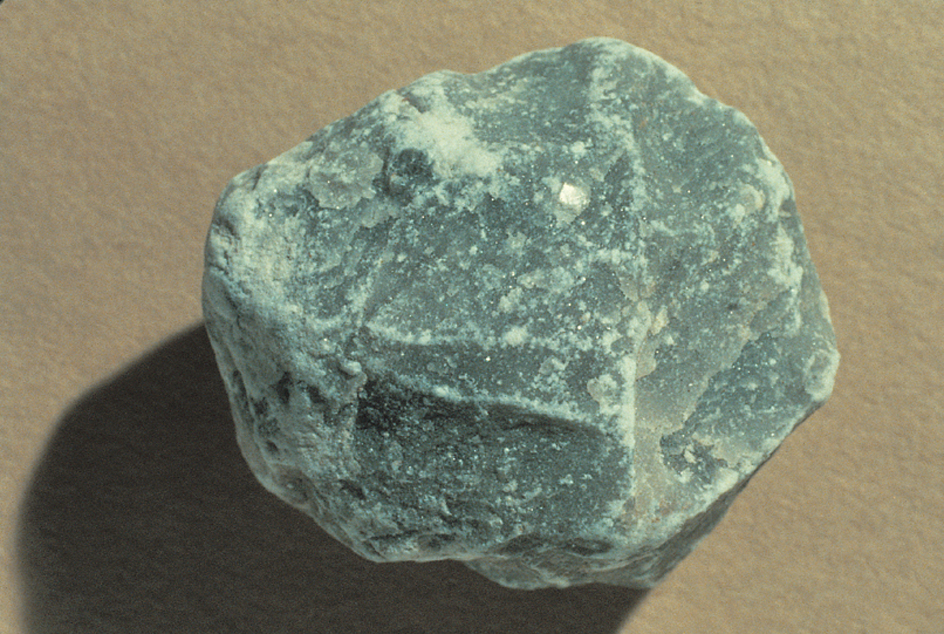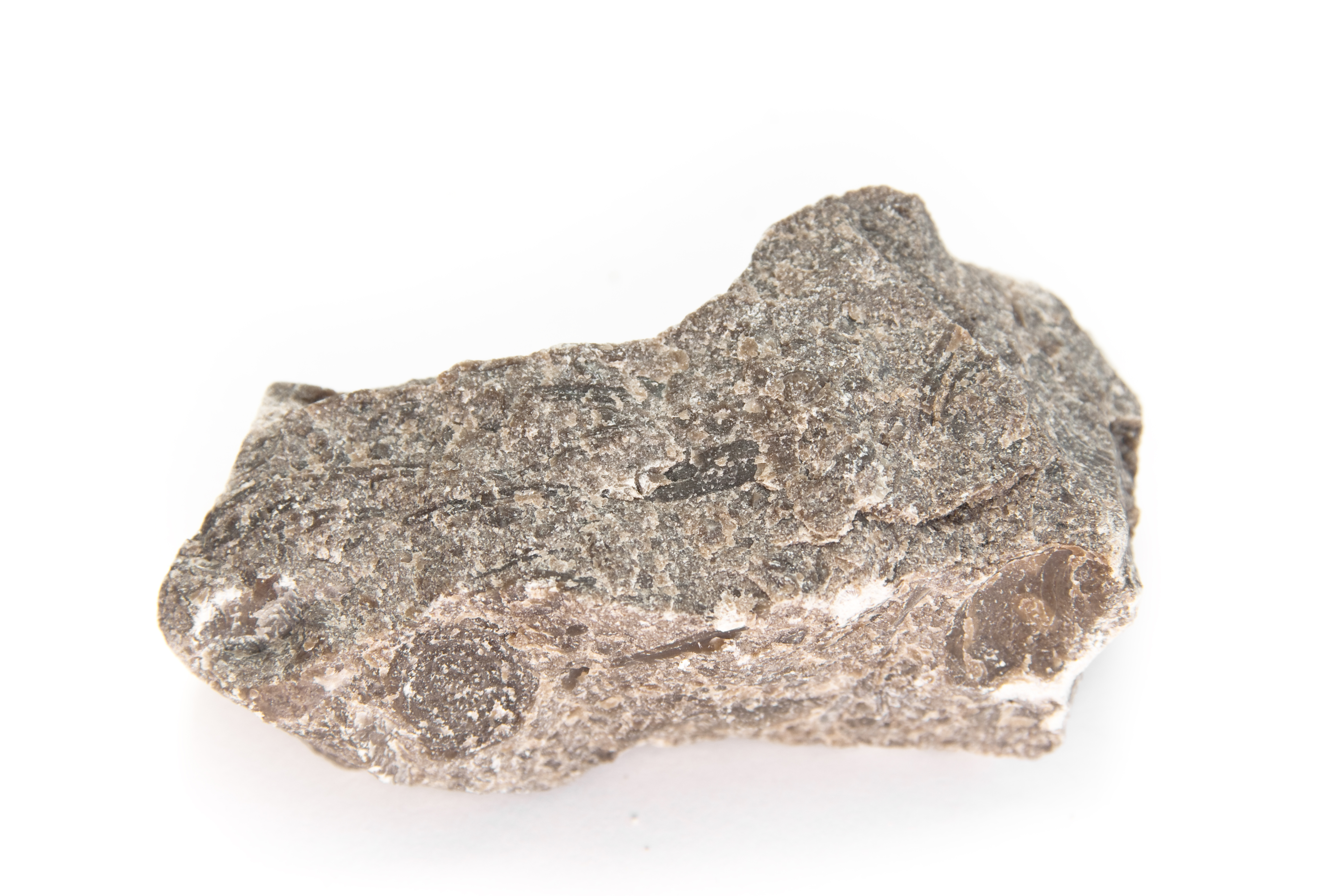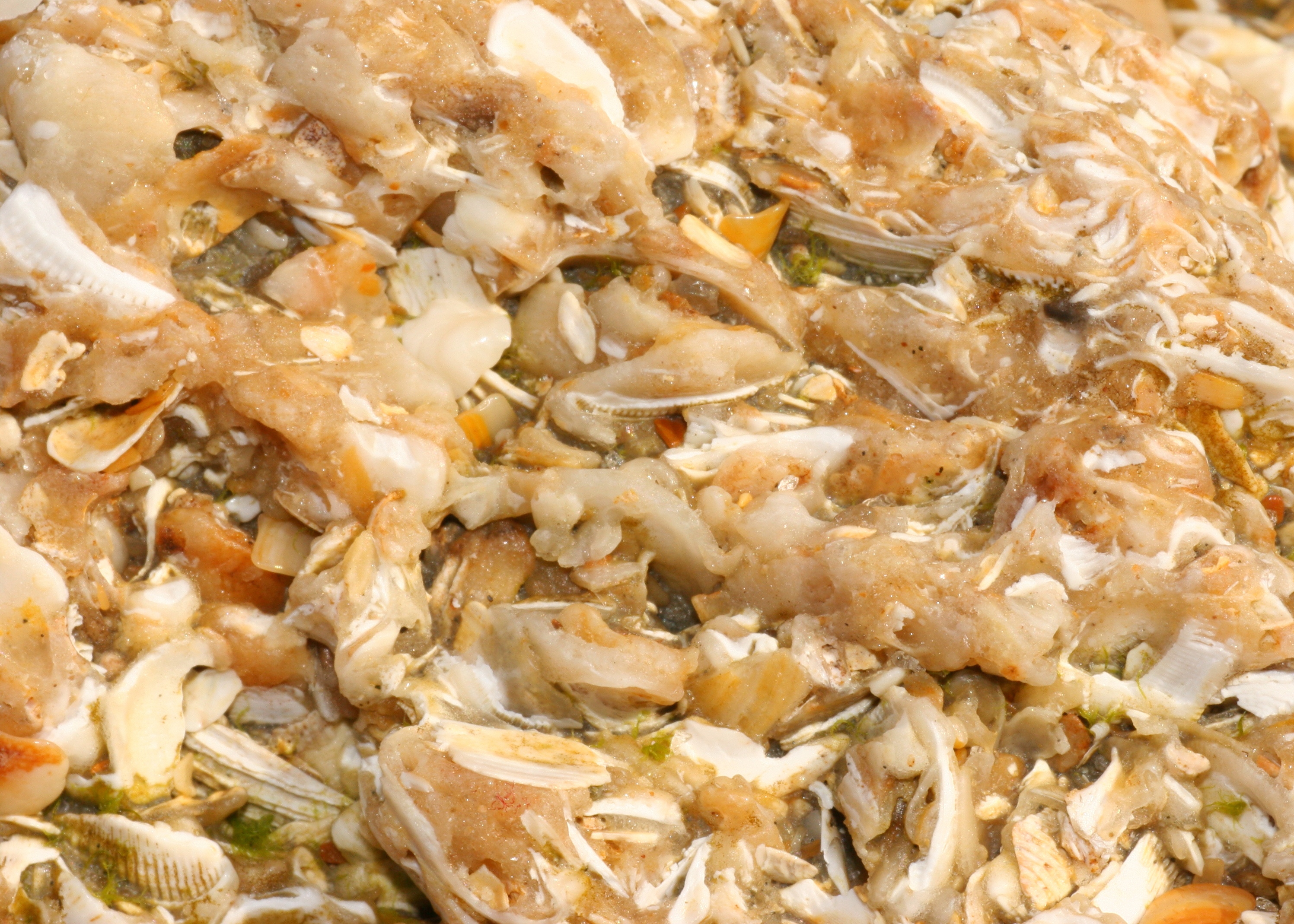Limestone is a type of rock made up mostly of calcite, a mineral form of calcium carbonate. Most limestone is gray, but all colors of limestone from white to black have been found. Scientists test natural rock to see if it is limestone by pouring cold diluted hydrochloric or sulfuric acid on it. Limestone gives off bubbles of carbon dioxide.

Most fresh water and sea water contains dissolved calcium carbonate. All limestones are formed when the calcium carbonate crystallizes out of solution. It leaves the solution in many ways, and each way produces a different kind of limestone. All the different kinds can be divided into two groups.

The first group includes limestones that formed almost completely without the aid of organisms. This type of limestone is forced out of solution when the water evaporates. Such evaporation takes place in the hot lagoons of many coral reefs, and in most shallow tropical seas. The high temperature causes the water on the surface to evaporate. A white “lime” mud is deposited on the bottom of the sea. This white mud slowly hardens into a light-colored limestone with a fine grain and even layers. Chalk is a limestone that remained soft.
When spring water evaporates on land, calcium carbonate forms a crust over moss, dead leaves, and the ground. It builds up a mound or terrace called tufa. Water that evaporates from hot springs forms a limestone called travertine. Evaporation of cold water in limestone caves forms stalactites and stalagmites (see Stalactite; Stalagmite).
The second group of limestones forms by the work of organisms. Many aquatic organisms draw calcium carbonate out of the water and use it to make their shells and bones. The oysters, clams, snails, corals, and sea urchins do this. When the animals die, the shells and bones are broken up by waves into shell and coral sand and mud. Many of the beaches on Pacific islands are made of such coral mud and sand. Most of the limestone layers in all parts of the earth were once shell or coral sand and mud. A limestone called coquina, formed of shells and coral, occurs in Florida. It is used to make roads and in building. 
Limestone makes an excellent building stone because it can be carved easily. Like sandstone, it can be cut any way without splitting. For this reason, both limestone and sandstone are often called freestone. Limestone is especially good for foundations and walls where a high polish is not needed. Quarries in Indiana produce about half the building limestone in the United States.
Some factories use limestone to clean waste gases and water before releasing them into the environment. Limestone is also used to make lime and to smelt iron ore (see Iron and steel (How iron is made)).
